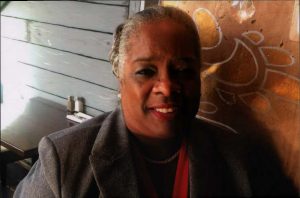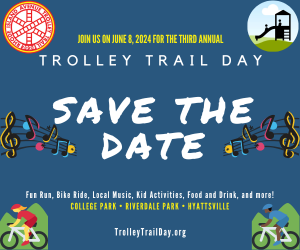By: Alexandra Radovic
Putting meat on the bones of history brings it to life.
This theme is front and center for Nathania Branch Miles, genealogist and University of Maryland (UMD) alum, as she and her research team delve into local history in hopes of connecting with descendants of individuals who were enslaved in Prince George’s County.

Courtesy of the Montpelier House Museum
“One of the most important things I learned as a genealogist is being able to put meat on the bones,” Branch Miles said, “making this person real.”
The Maryland-National Capital Park and Planning Commission (M-NCPPC) is using two of Prince George’s richest historical sites — the Riversdale House Museum, in Riverdale, and Laurel’s Montpelier House Museum — to research the history of slavery in the region. Branch Miles and the university are also participating in the work at Riversdale.
On Aug. 6, with a metaphorical shovel in hand, Branch Miles hosted a meeting at the Montpelier House Museum. The meeting gave the researchers a chance to talk with individuals who think they may be descendants of slaves who lived at the site. The team spoke with members of three families who believe they may be connected to the Snowden family, four generations of whom lived at the mansion and some of whom owned slaves.
One attendee, Jacqueline Morales, told the Here & Now about her possible connections to the mansion, which was built in the 1780s and is now a historic landmark. Close to 170 slaves lived and worked there, and some were freed in the mid-1800s.
“I shared back as far as my second great-grandfather [great-great-grandfather], who was Sampson Powell,” Morales said, “Apparently [there is reason to] believe the Powells had been enslaved there at Montpelier.”
She said that Sampson Powell was born in 1820. His son lived in Bacontown, in Anne Arundel County, but later made his home in Laurel, where he built homes and eventually worked on the railroads.
Morales said she believes that members of the Powell family eventually became enslaved at Montpelier, but she is working to find direct evidence of this. She noted that there is a large gap in her family’s history between 1820, when her great-great-grandfather was born, and 1930, when the family’s known history picks up again. She believes one of her ancestors may have been associated with the mansion during the period that’s unaccounted for.
“I’m interested in making that actual connection,” she said, “But right now, there is a huge gap. … There is a missing link.”
According to Morales, Queen’s Chapel United Methodist Church, in Muirkirk, has a record of a James Powell who helped build the church. She thinks he could be a relative of hers and that he may have been enslaved at Montpelier.
Morales, who went to a segregated school in the 1960s, explained that the missing record of Sampson Powell’s life prompted her to research her family history. In her search, Morales discovered that she may have connections to individuals who were slaves and to enslavers, alike.“It puts me in a place not to want to dislike or discredit anyone, but to embrace family,” she said, referencing her approach to establishing her lineage.
Determining clear lineage is challenging, though, as few paper records of slaves’ lives exist. “Unfortunately with slaves, there’s not much of a paper trail … it helps to be able to put a name and a face to a story, ‘cause it makes [things] come alive,” Branch Miles said. “Our goal is to identify some of these people,” she added.
The Riversdale House Museum is also working to reconstruct the history of slavery at the site.
Executive Director Maya Davis has partnered with Reparations 4 Slavery to connect descendants of slaves to their history, according to WAMU. Reparations 4 Slavery is an initiative and clearinghouse for information about slavery, race, racism, and healing.
UMD’s Office of Community Engagement is also working with Davis and the Riversdale House Museum staff to transcribe documents in the museum’s collection that are related to slave-holdings.
Davis said the goal of the transcribing project is to “make meaningful connections with descendant communities, build upon our institutional knowledge, and to make information more accessible to visitors.”
According to Katie Little, lead community engagement specialist with the office, the university’s project with the Riversdale House Museum is unique.
“The museum has 8,000 documents on loan from the Calvert Family and they will be hosting 20 volunteers to transcribe some of the writings into electronic formats,” Little explained. “This project is a great opportunity to delve into the history of the house and to acknowledge the importance of social justice.”
As part of this effort, the university and museum will host a transcribe-a-thon for volunteers who would like to support the project. The event is part of Good Neighbor Day, an annual partnership between the University of Maryland and the City of College Park, and will take place on Nov. 12 at the Riversdale House Museum, at 4811 Riverdale Road in Riverdale, from 8:30 a.m. to noon. No experience is necessary, and museum staff will be on hand to oversee the project.
M-NCPPC is hosting a weekend of educational events at the Riversdale House Museum on Sept. 16 and 17. For more information, visit pgparks.com/5149/Echoes-of-the-Enslaved







